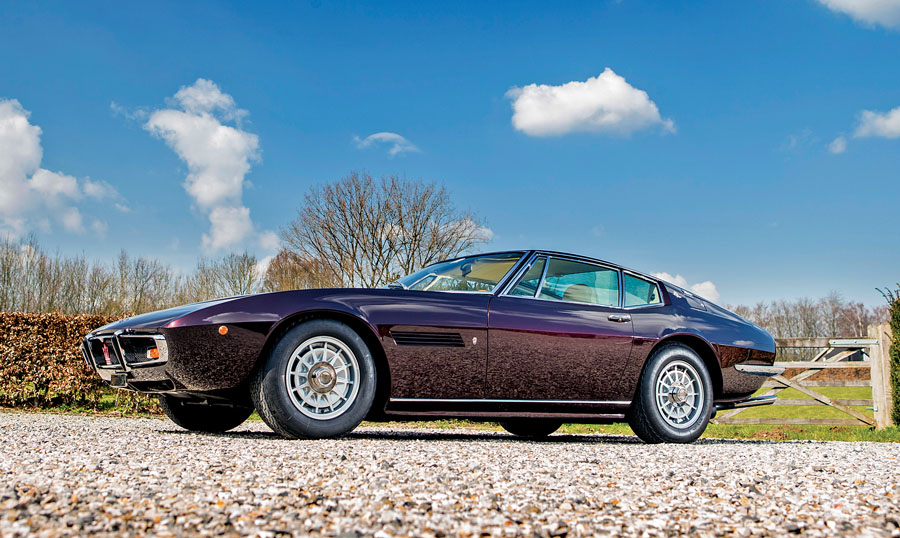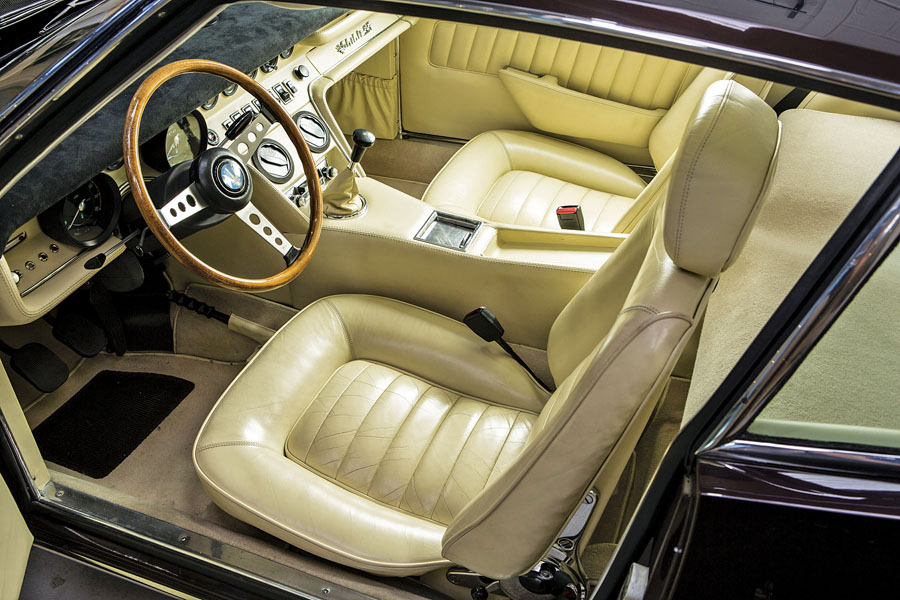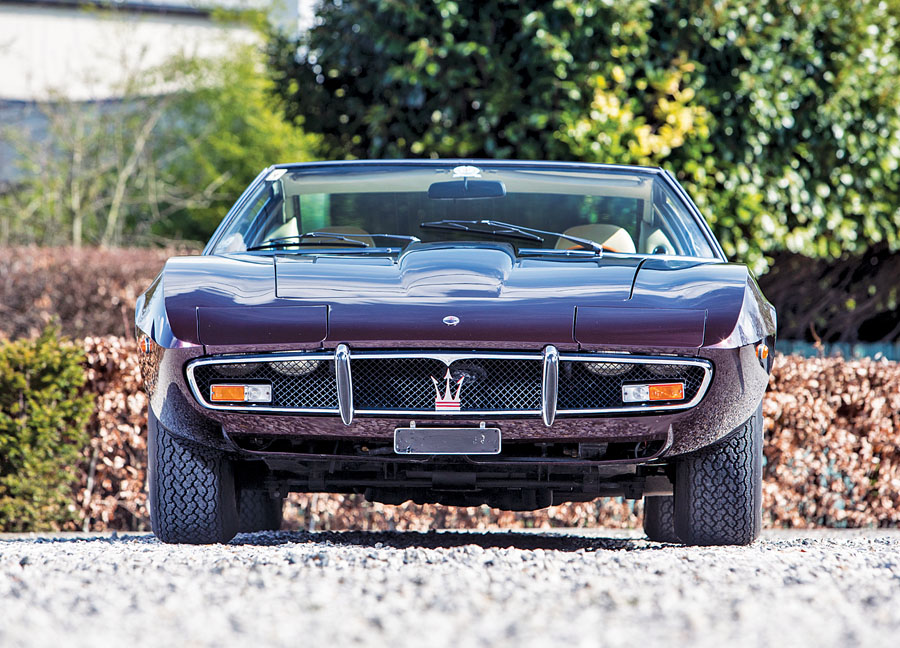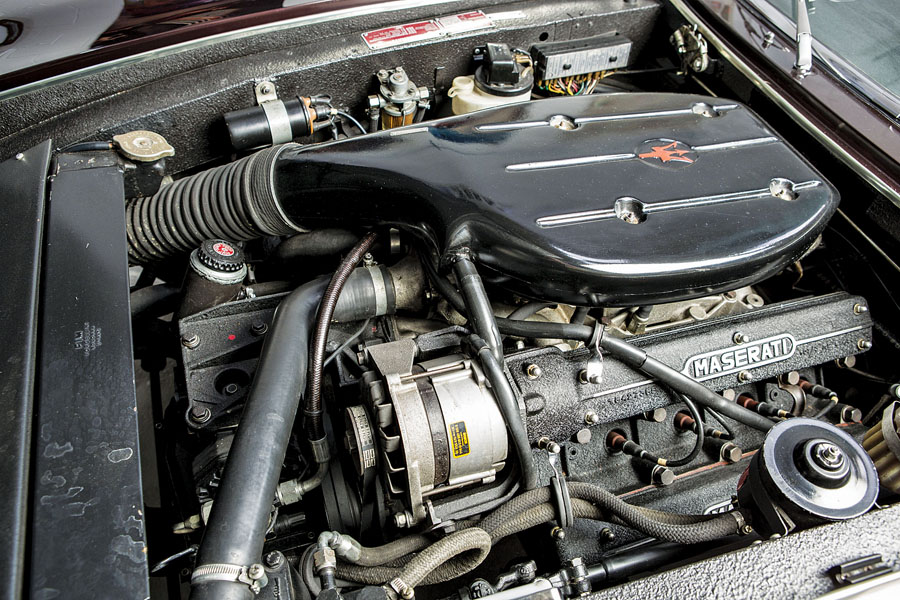SCM Analysis
Detailing
| Vehicle: | 1971 Maserati Ghibli SS 4.9 by Ghia |
| Years Produced: | 1967–70 |
| Number Produced: | 1,149 (including SS cars) |
| Original List Price: | $19,000 |
| SCM Valuation: | $286,000 |
| Tune Up Cost: | $3,500 |
| Chassis Number Location: | Engine compartment on side rail |
| Engine Number Location: | Stamped on side of block |
| Club Info: | Maserati Club International |
| Website: | http://www.maseratinet.com |
| Alternatives: | 1970 Ferrari 365 GTB/4 Daytona, 1970 Iso Grifo, 1969 Lamborghini Islero S, 1970 Aston Martin DBS |
| Investment Grade: | B |
This car, Lot 122, sold for $314,262 (€263,333 €1=$1.19), including buyer’s premium, at Bonhams Les Grandes Marques à Monaco auction on May 11, 2018.
One would be hard pressed to find any reasonable person who disagrees with the opinion that the Maserati Ghibli is one of the most beautiful cars ever built. It represents perhaps the high point of Giorgetto Giugiaro’s early career — and it is the entry to his most successful creative and commercial work. For me, its design is the perfect expression of what the car itself offers: smooth, effortless, elegant performance.
The Ghibli possesses everything you would want in a collector car: great looks, excellent road manners and comfort. It’s rare enough to be a treat to encounter, but it is still supported enough to be able to use on a regular basis without worry of having to create replacement parts. They are welcome on concours lawns and are a terrific way to spend a week behind the wheel on a rally.
A valuable investment
As it happens, Ghiblis are a pretty good long-term investment, which is not at all odd considering their combination of attributes. What generally makes a car memorable and desirable is what makes it valuable. Our subject car made its concours debut back in 1993, and it has been well driven and well maintained since. It remains extremely attractive, with a body that appears straight and true, showing smooth and clear reflections from one panel to the next. The gaps are generally tight and even, although the hood showed slight misalignment. The paint is very shiny, but it shows more than 20 years of light polish-swirl scratches and some small areas of sinkage.
The seats show a nicely broken-in and gently used patina, although the dash top seems to have been more recently refreshed. As it lacks any fading from the sun, it appears a bit startling in comparison to the rest of the lovely soft cream interior. It is still fitted with its original Maserati-branded Autovox cassette radio, which is perfection for a period-radio geek like myself.
Under the hood, evidence of the miles the Ghibli has covered could be seen, but it still presented well. The Maserati Classiche dossier with the car confirms the color scheme change from the original Jewel Green over white leather to the present Rosso Cordoba over cream.
The catalog-copy dismissal of the original color scheme as “particularly lurid” is more a statement of British taste than of the appropriateness of the color to the car and the period.
Tripling in value since 2010
Our subject Ghibli is a good example with very good provenance. It is a car to be sought after in the market. In the December 2010 issue of SCM (Etceterini Profile, p. 42), I wrote a profile on a 1970 Ghibli 4.7 coupe that was sold at Worldwide’s Auburn, IN, sale in September. In that piece I observed that the $53,900 realized for that example was well done for the seller, especially in what didn’t seem to be a prime market outlet for a European GT. It was still on the low end of values at the time, with the top cars bringing $80,000 or so.
Times seem to have certainly changed. But have they really changed that much? The Ghibli coupe has tripled in value since 2010 — across all levels of condition. Now the best Ghiblis can regularly bring $300,000.
It’s long been popular to compare the Ghibli with the Ferrari Daytona, even though this comparison is not really apropos, as their fundamental driving characters are so diverse. But for now, we’ll stick with it. Back in 2010, the best Daytona might have brought $400,000, while today that car has “only” doubled in price to $800k.
The highest price for a Ghibli coupe in the SCM Platinum Auction Database is $398,936 for a 1969 4.7 that Artcurial sold in Paris in June 2015, for €351,640 when the euro was at $1.13. At today’s exchange rate, that sale would have been over $400k.
Today, I feel certain that a freshly restored Ghibli in original colors done to the most correct standard could easily bring $450,000 or more. For me, this sale was an interesting sale of a good — but not top — example at current market. ♦
(Introductory description courtesy of Bonhams.)



